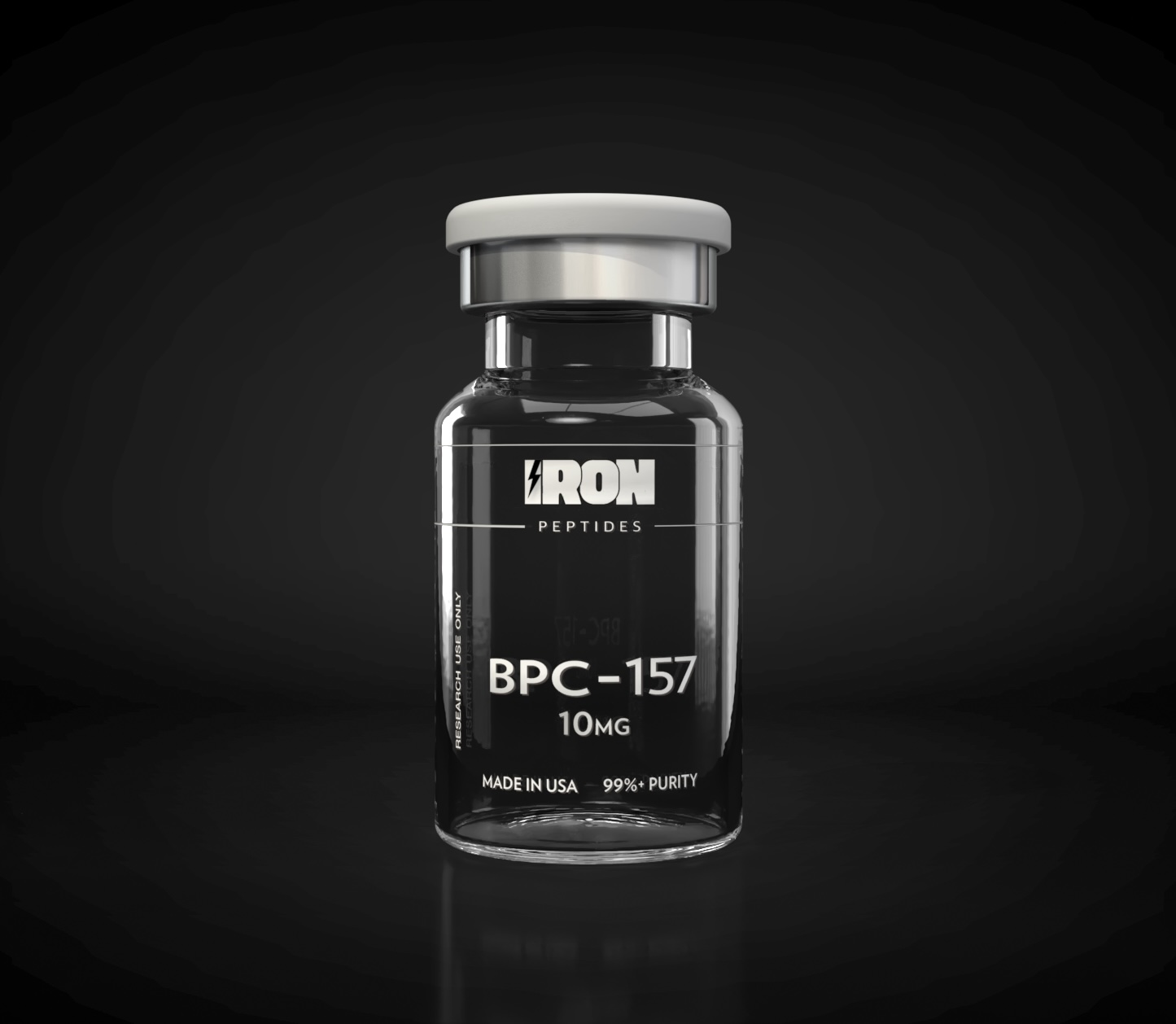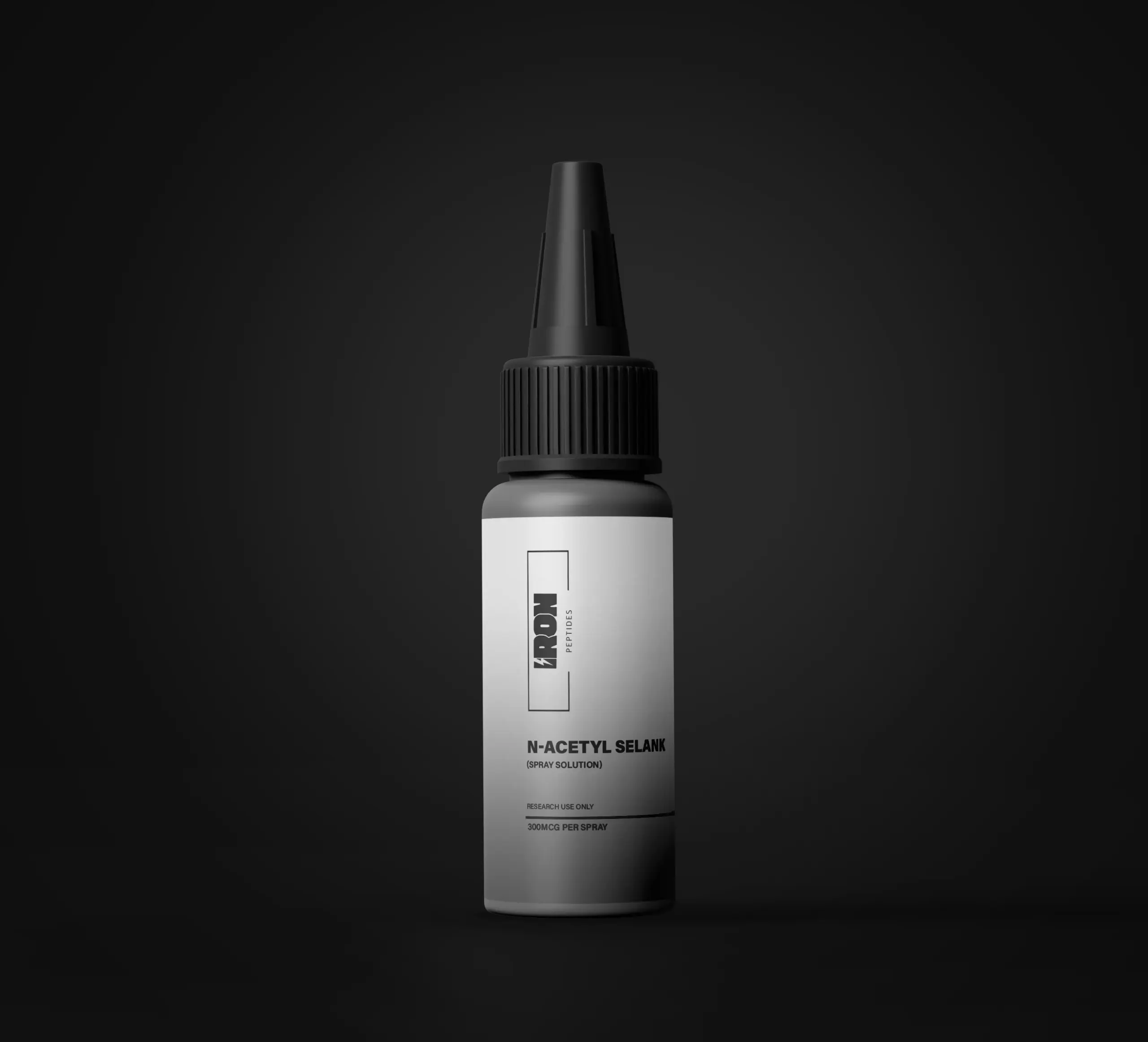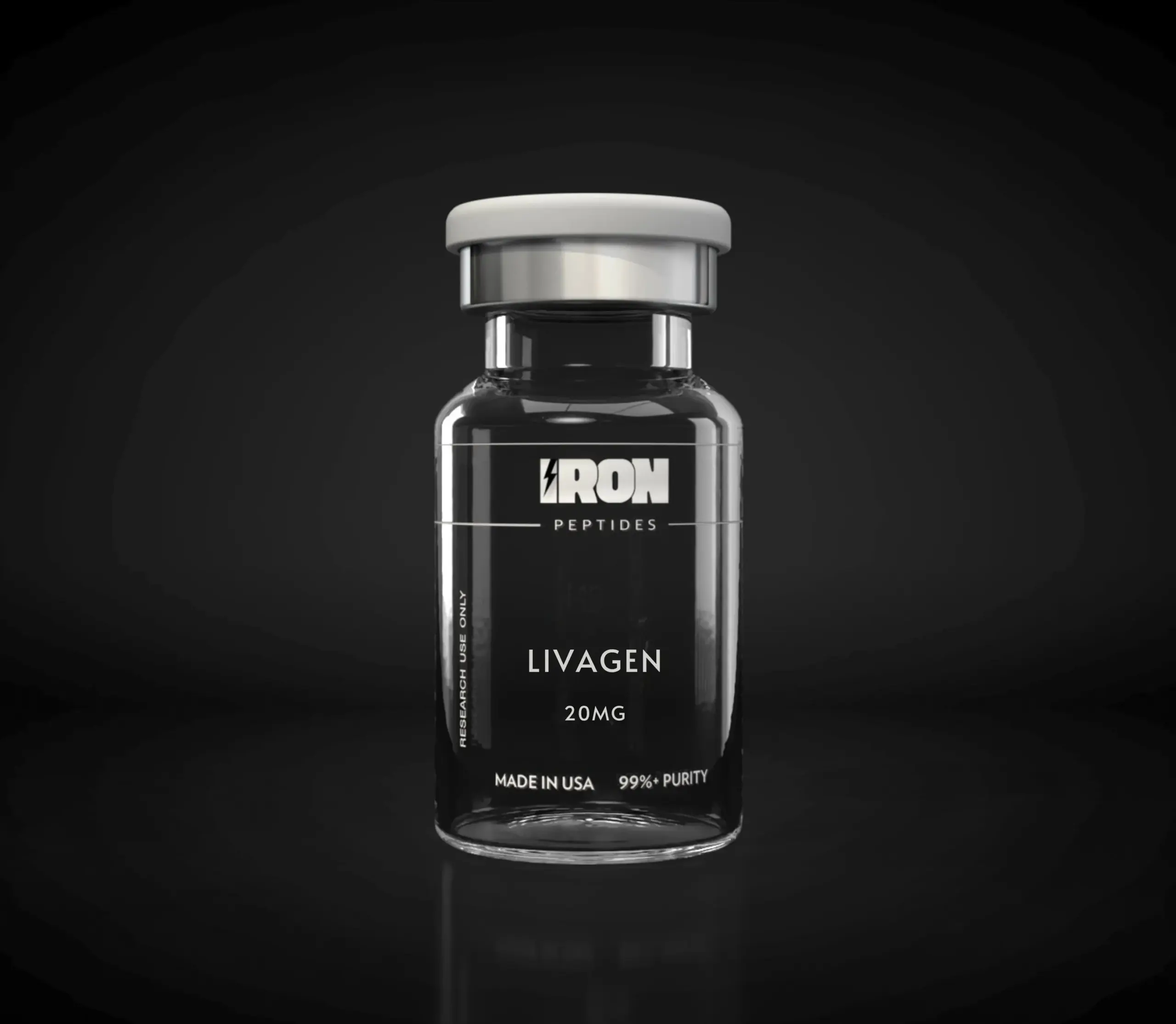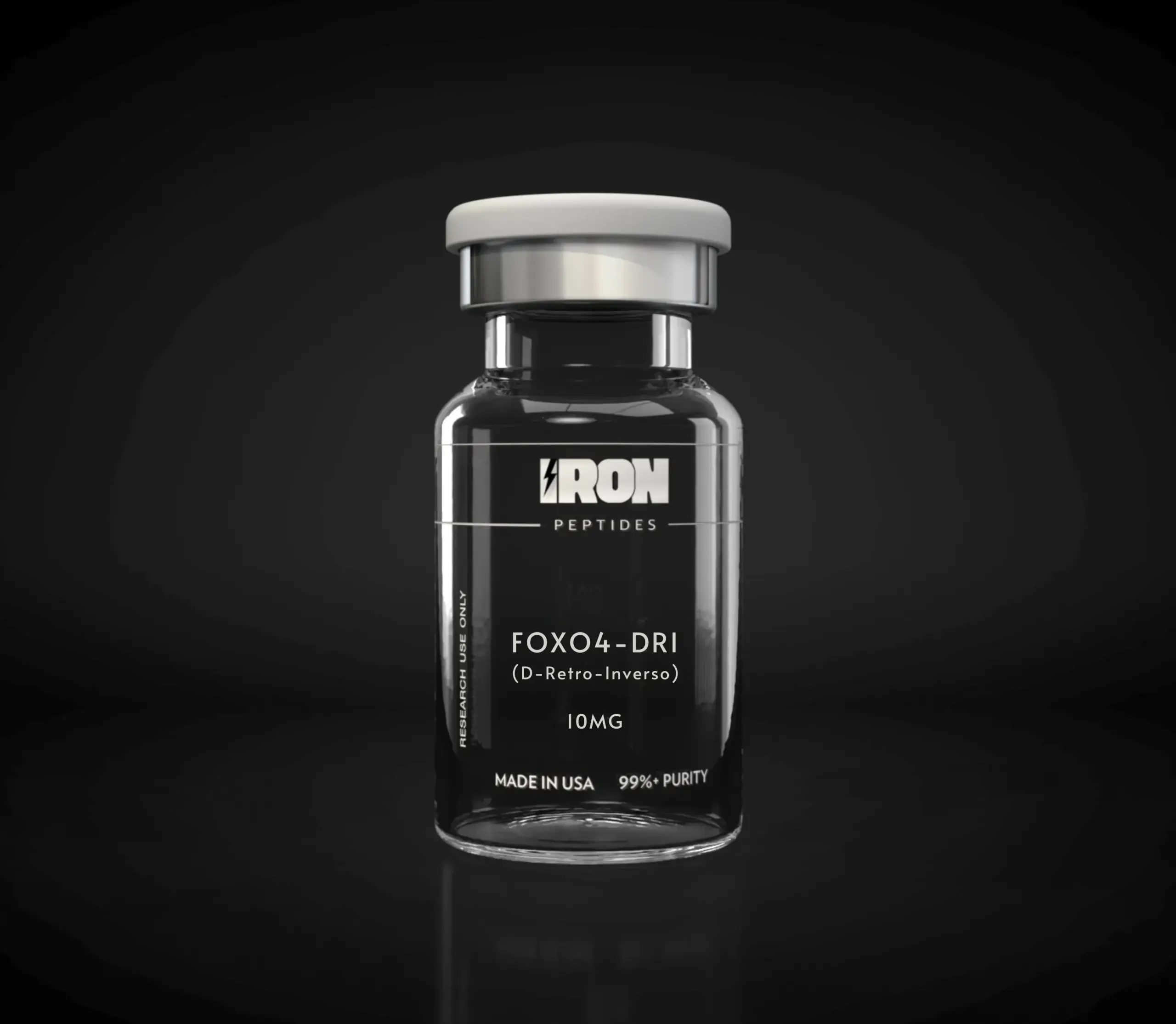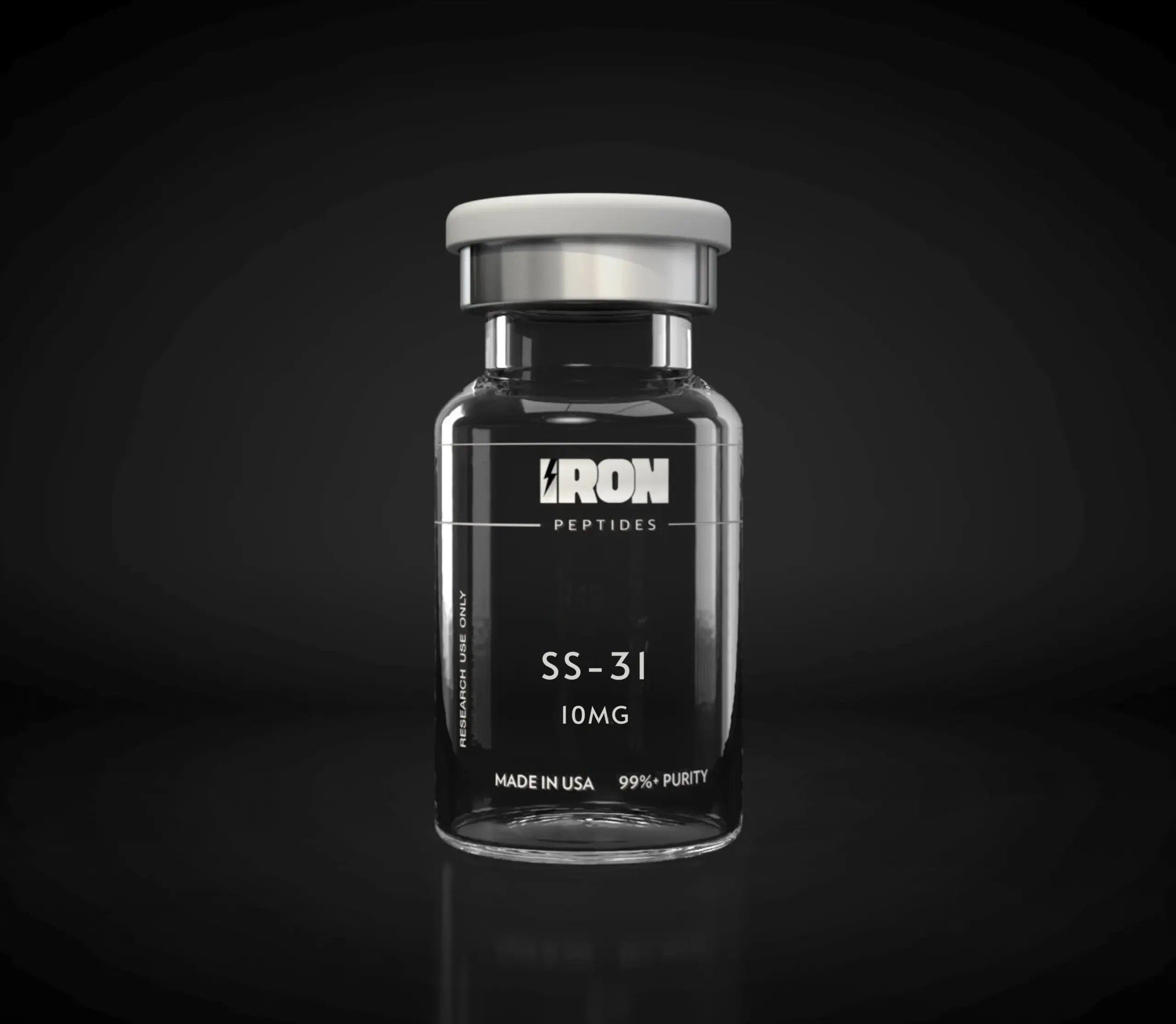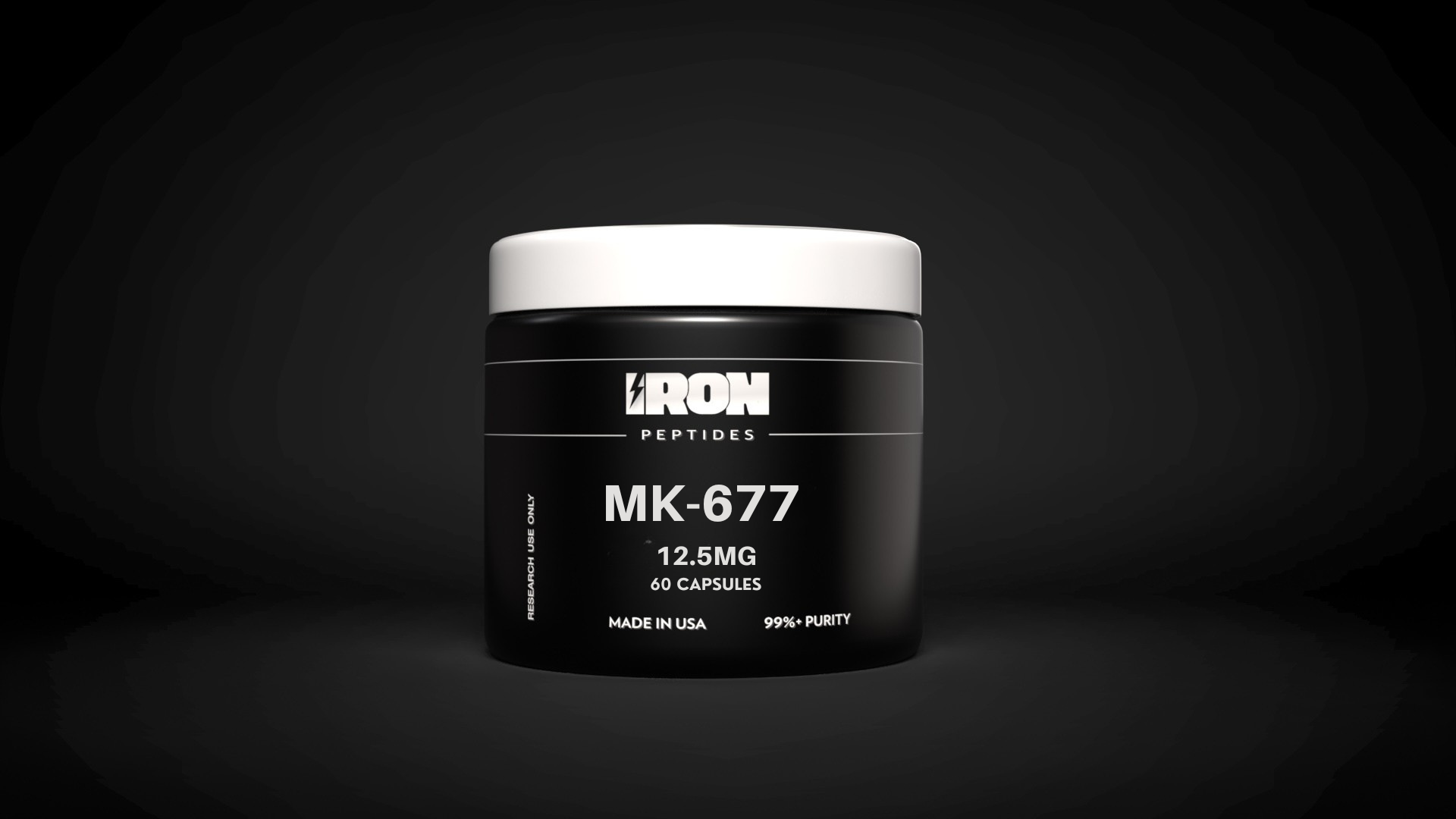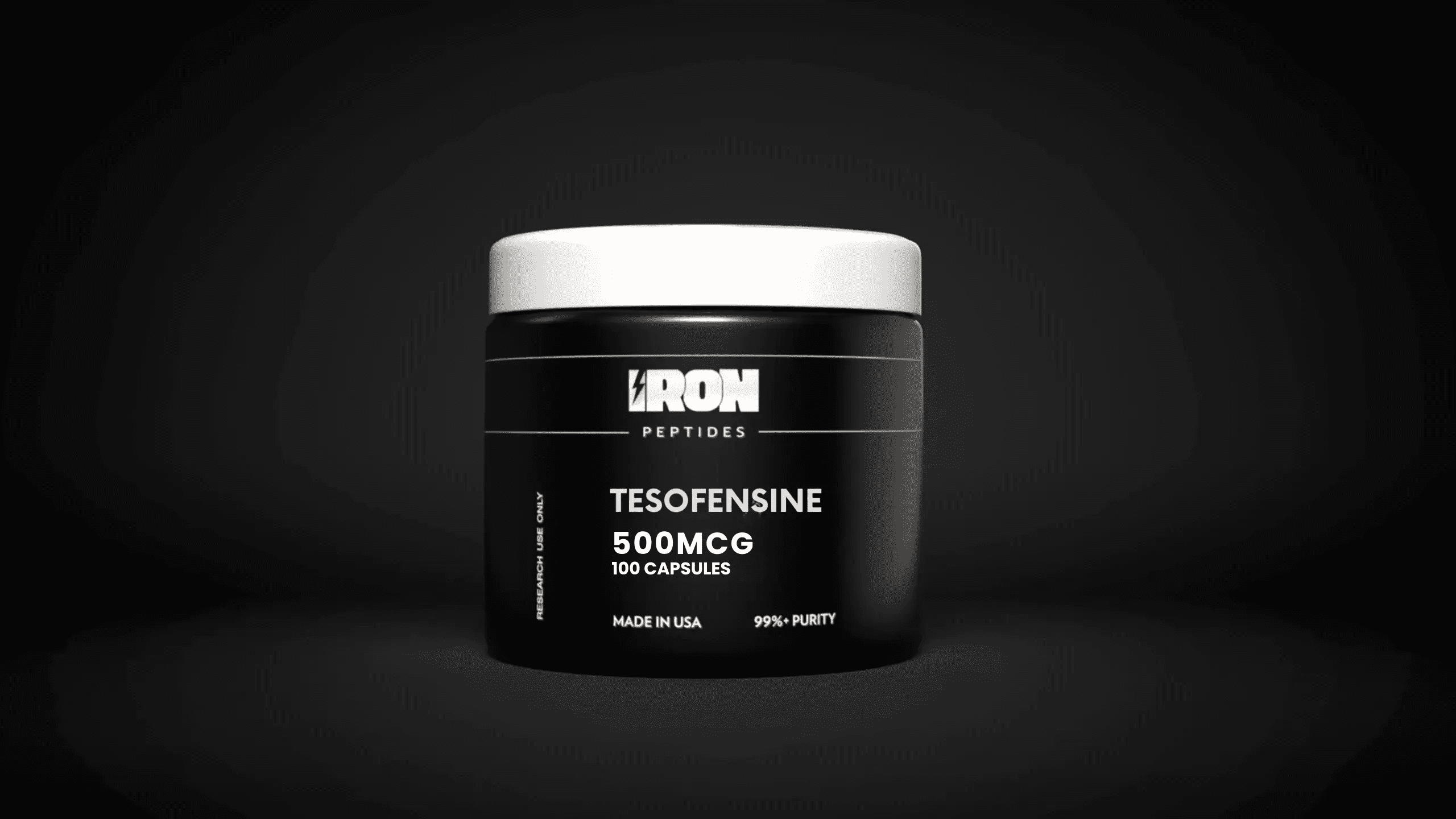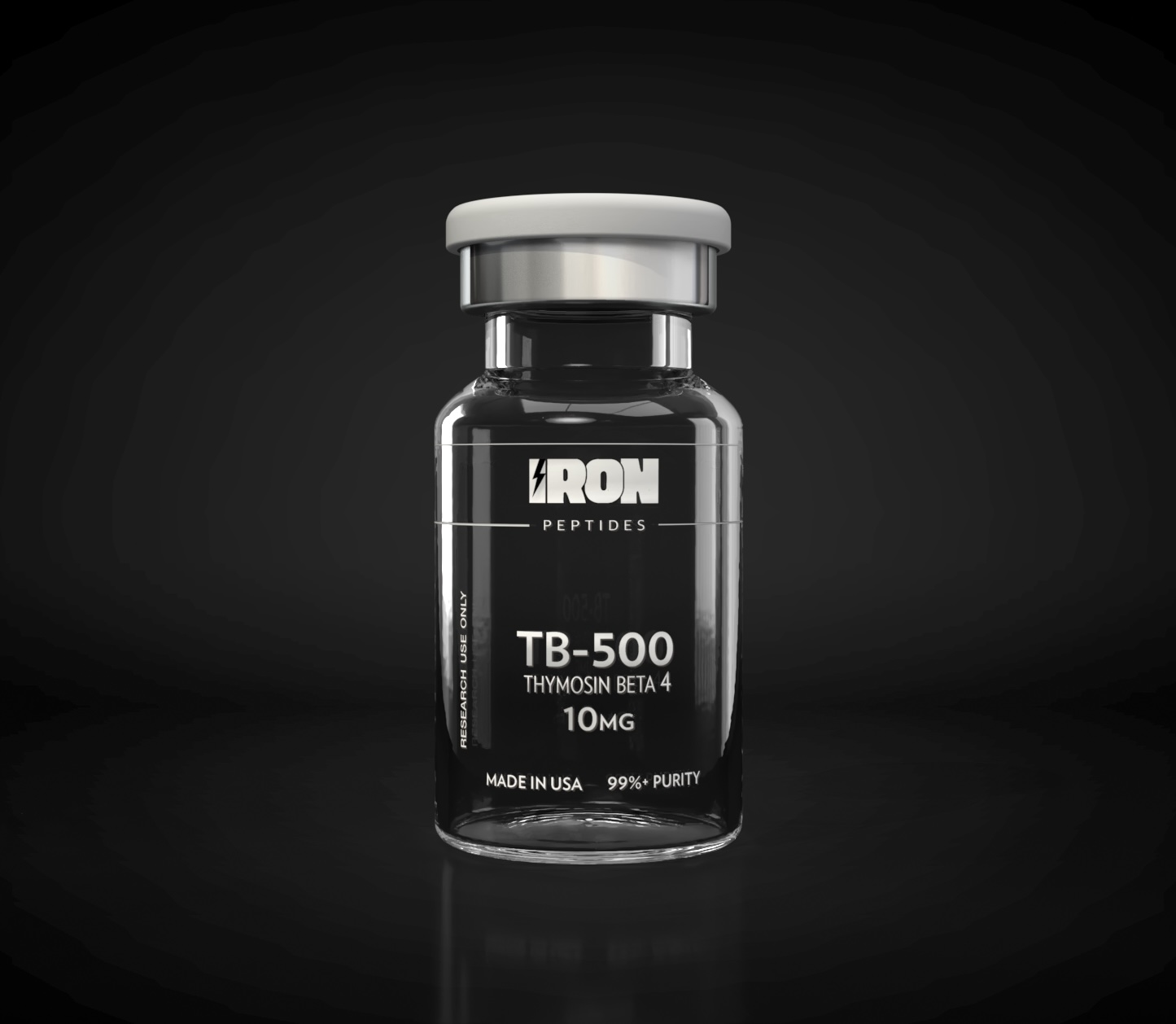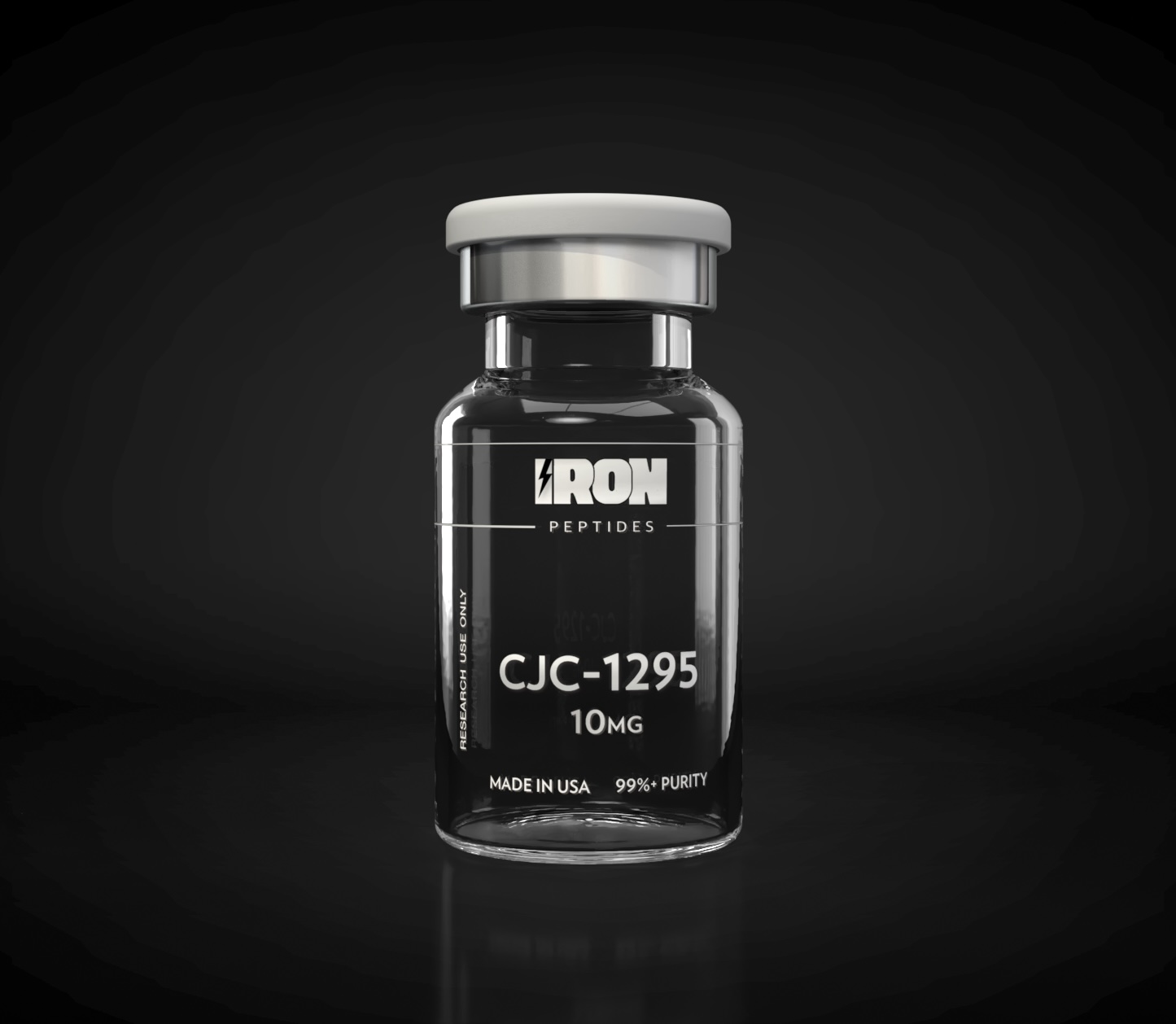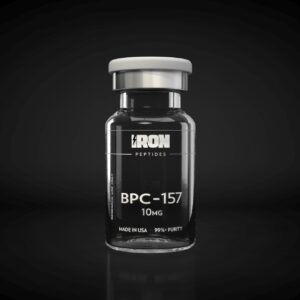BPC-157 (10MG)
$99.99
Shipping Calculated at checkout.
Availability: 9 in stock
FREE SHIPPING
99%+ PURITY
MADE IN USA

What is BPC-157 (10MG)?
BPC-157 is a powerful healing peptide originally derived from the human gut. Backed by extensive studies, it’s known to speed up recovery for injuries, especially to muscles, tendons, ligaments, and even burns.
It doesn’t just heal — it protects. BPC-157 helps repair the digestive tract, fight ulcers, reduce pain, and support organ protection. It boosts blood flow, enhances collagen formation, and accelerates wound healing at a systemic level.
This 10mg formulation is ideal for those looking to:
-
Recover faster from workouts or injuries
-
Support gut health and reduce inflammation
-
Boost overall healing and resilience
Engineered for performance. Built for recovery.
Chemical Structure of BPC-157 (10MG)
BPC-157 is a pentadecapeptide, meaning it’s made of 15 amino acids linked in a precise sequence:
Gly–Glu–Pro–Pro–Pro–Gly–Lys–Pro–Ala–Asp–Asp–Ala–Gly–Leu–Val
This unique structure is what gives BPC-157 its powerful healing and regenerative effects — supporting everything from tissue repair to gut health at a cellular level.
Lab-tested. Science-backed. Clinically respected.

What Are the Effects of BPC-157 (10MG)?
Tissue Regeneration & Wound Healing:
Preclinical studies in rodents report accelerated healing of tendons, ligaments, skin wounds, and muscle injuries, correlating with increased fibroblast growth, collagen synthesis, and angiogenesis [5][6][8].
Gastrointestinal Protection:
Demonstrated anti‑ulcer and cytoprotective effects in gastric injury models, with regulated villus‑crypt structure and intestinal tissue preservation [7].
Angiogenesis & Vascular Repair:
Stimulates vascular endothelial growth factor (VEGF) signaling and nitric oxide pathways, promoting blood vessel formation in ischemic and injury models [4][7][9].
Neuro‑ & Organ‑Protection:
Experimental findings suggest BPC‑157 mitigates brain and nerve injury, maintains liver and kidney integrity under toxic stress, and reduces inflammatory markers [5][11].
Anti‑Inflammatory & Oxidative Stress Reduction:
Modulates nitric oxide and inflammatory cytokines, displaying both antioxidant and analgesic effects in animal research [4][7][11].
Safety Profile:
To date, studies report low toxicity and no significant adverse immunogenic or endocrine reactions under laboratory conditions [5][10].
Citations
- PubChem, “BPC‑157 Compound Summary,” NCBI PubChem, CID 9941957.
- BPC‑157 Peptide, Peptide Sciences, “What is BPC‑157 Peptide?”
- PubChem, BPC‑157 molecular data (formula, weight).
- PubChem, physicochemical properties and stability data.
- S. Seiwerth et al., “Stable Gastric Pentadecapeptide BPC‑157 and Wound Healing,” Front. Pharmacol., 2021, 12:627533.
- M. Staresinic et al., “Gastric pentadecapeptide BPC‑157 accelerates healing of transected rat Achilles tendon and in vitro stimulates tendocyte growth,” J Orthop Res., 2003, 21(6):976–983.
- Chung‑Hsun Chang, W.‑C. Tsai, M.‑S. Lin et al., “The promoting effect of pentadecapeptide BPC‑157 on tendon healing involves tendon outgrowth, cell survival, and cell migration,” J Appl Physiol., 2011, 110(3):774–780.
- “Stable gastric pentadecapeptide BPC‑157: novel therapy in gastrointestinal tract,” Curr Pharm Des., 2011.
- BPC‑157 peptide promotes angiogenesis via VEGFR2 and nitric oxide signaling in ischemic models.
- Peptides.org, “BPC‑157 Reviews, Clinical Trials, and Safety,”
- T. Cerovecki et al., “Pentadecapeptide BPC‑157 (PL 14736) improves ligament healing in the rat,” J Orthop Res., 2010, 28(9):1155–1161.
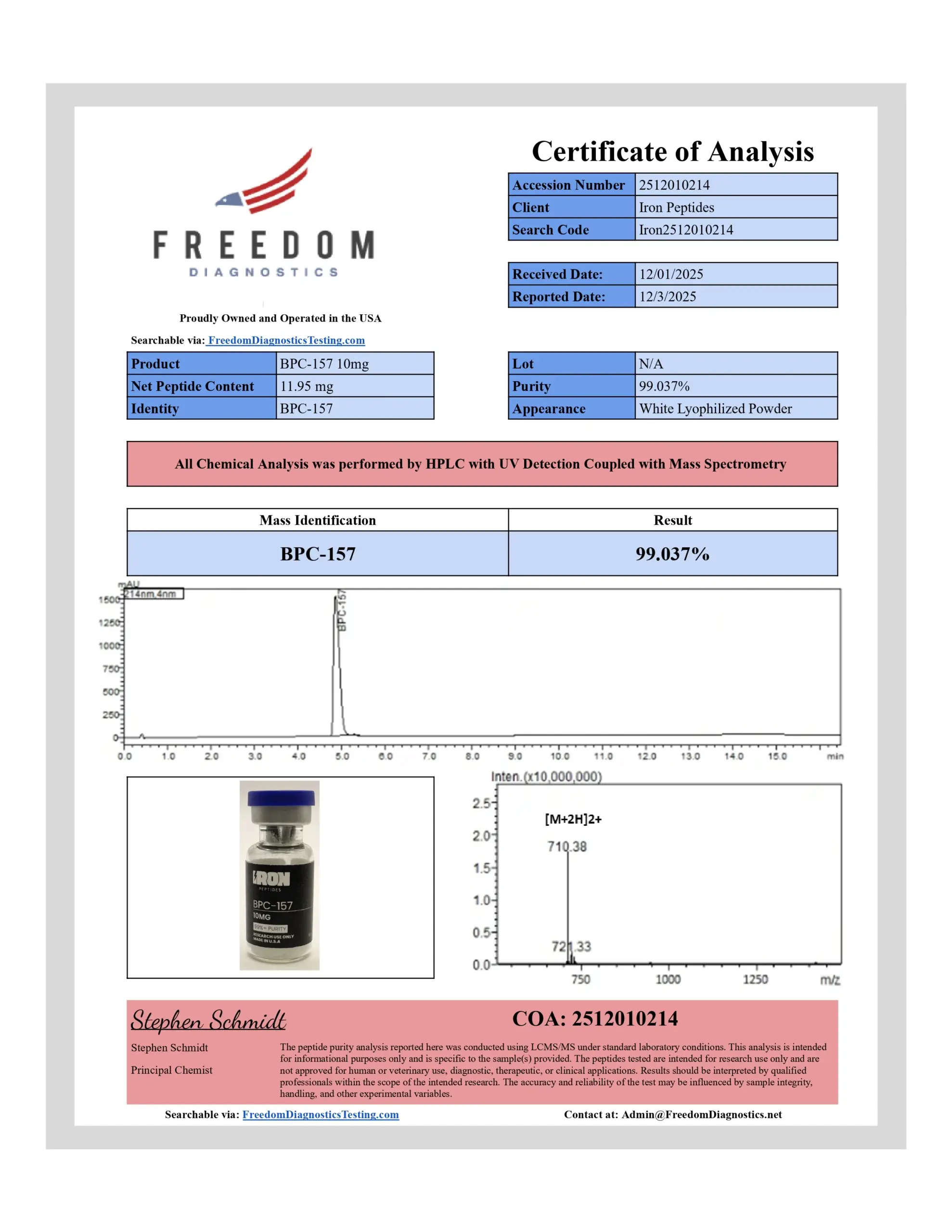
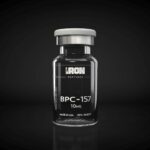 BPC-157 (10MG)
BPC-157 (10MG)
| 5 star | 0% | |
| 4 star | 0% | |
| 3 star | 0% | |
| 2 star | 0% | |
| 1 star | 0% |
Sorry, no reviews match your current selections

TrustScore 4.6
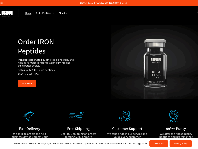
Ironpeptides
4.6
17 Reviews
I decided to try something new with…
I decided to try something new with Iron Peptides, and it has already been very beneficial. Since starting, I’ve noticed many positive effects. I feel motivated to continue, and I’m confident I’ve found the right company to trust on my personal journey—Iron Peptides.
The products
The products, services and information is exceptional

Fist time trying peptides to see what…
Fist time trying peptides to see what all the hype was about. And. I AM HOOKED! Have never felt. Better. 5 months after my neck surgery and I feel amazing. Recovery was easy and I have all my strength back!!
I decided to try something new with…
I decided to try something new with Iron Peptides, and it has already been very beneficial. Since starting, I’ve noticed many positive effects. I feel motivated to continue, and I’m confident I’ve found the right company to trust on my personal journey—Iron Peptides.
The products
The products, services and information is exceptional

Fist time trying peptides to see what…
Fist time trying peptides to see what all the hype was about. And. I AM HOOKED! Have never felt. Better. 5 months after my neck surgery and I feel amazing. Recovery was easy and I have all my strength back!!

